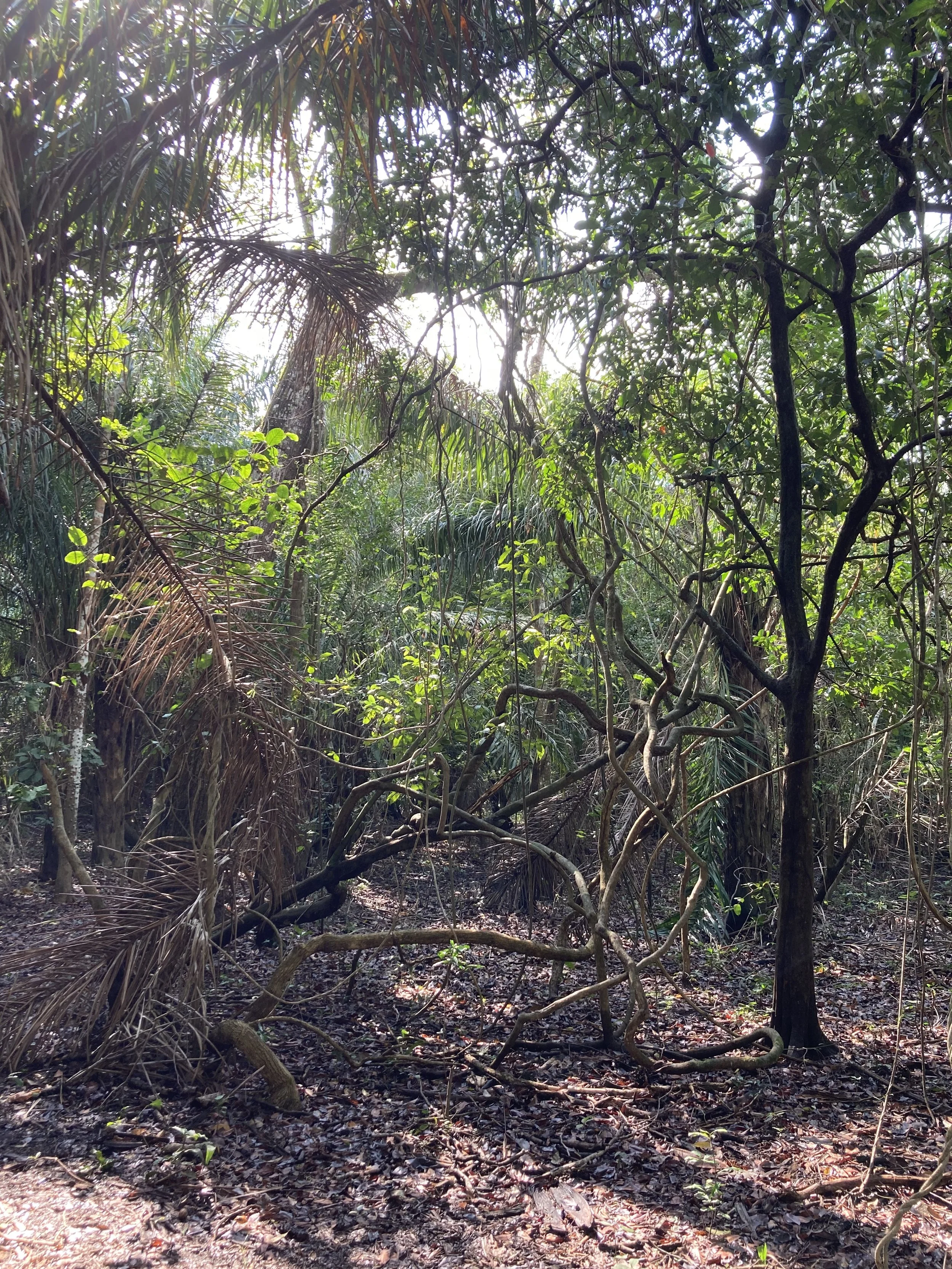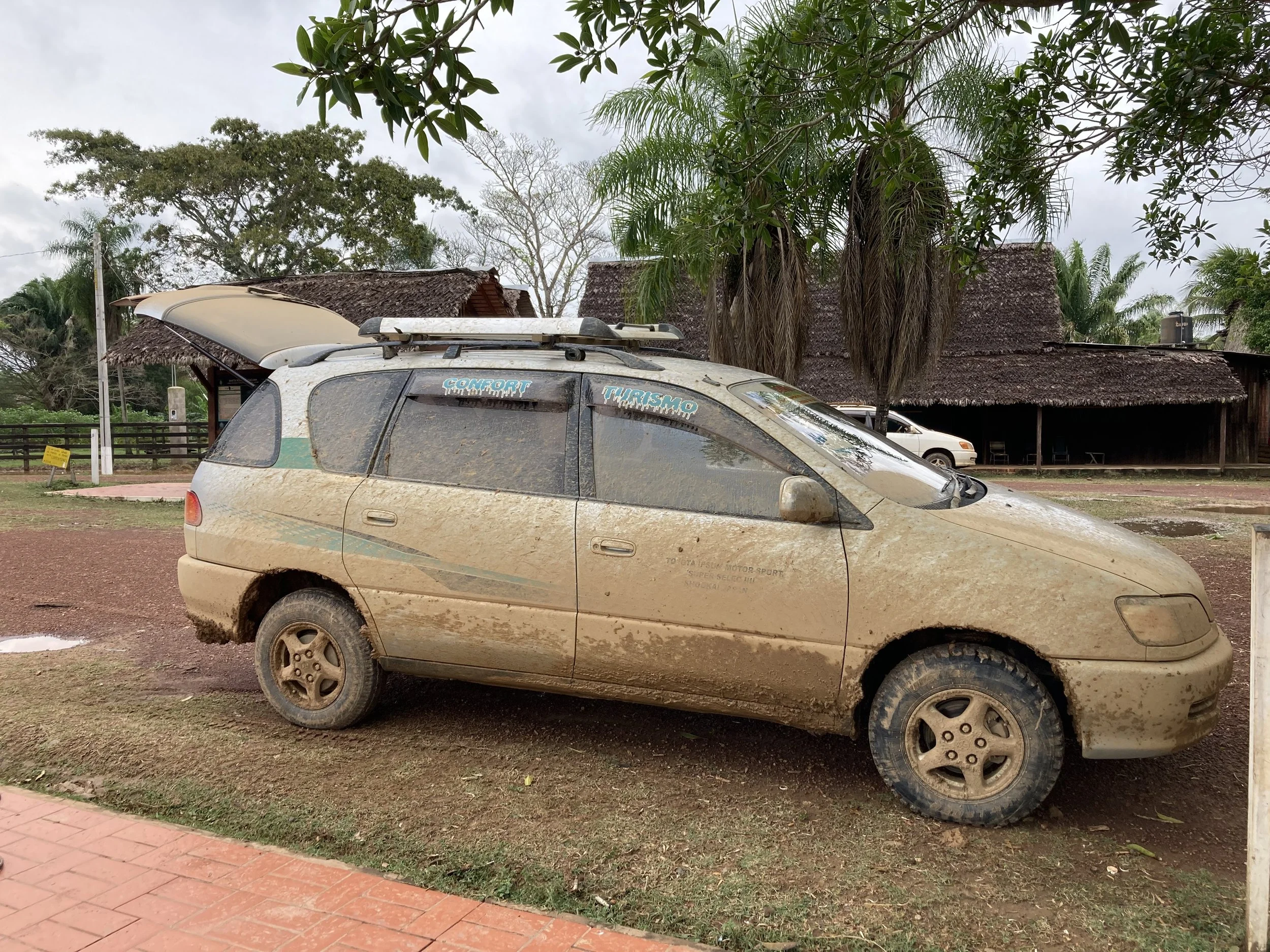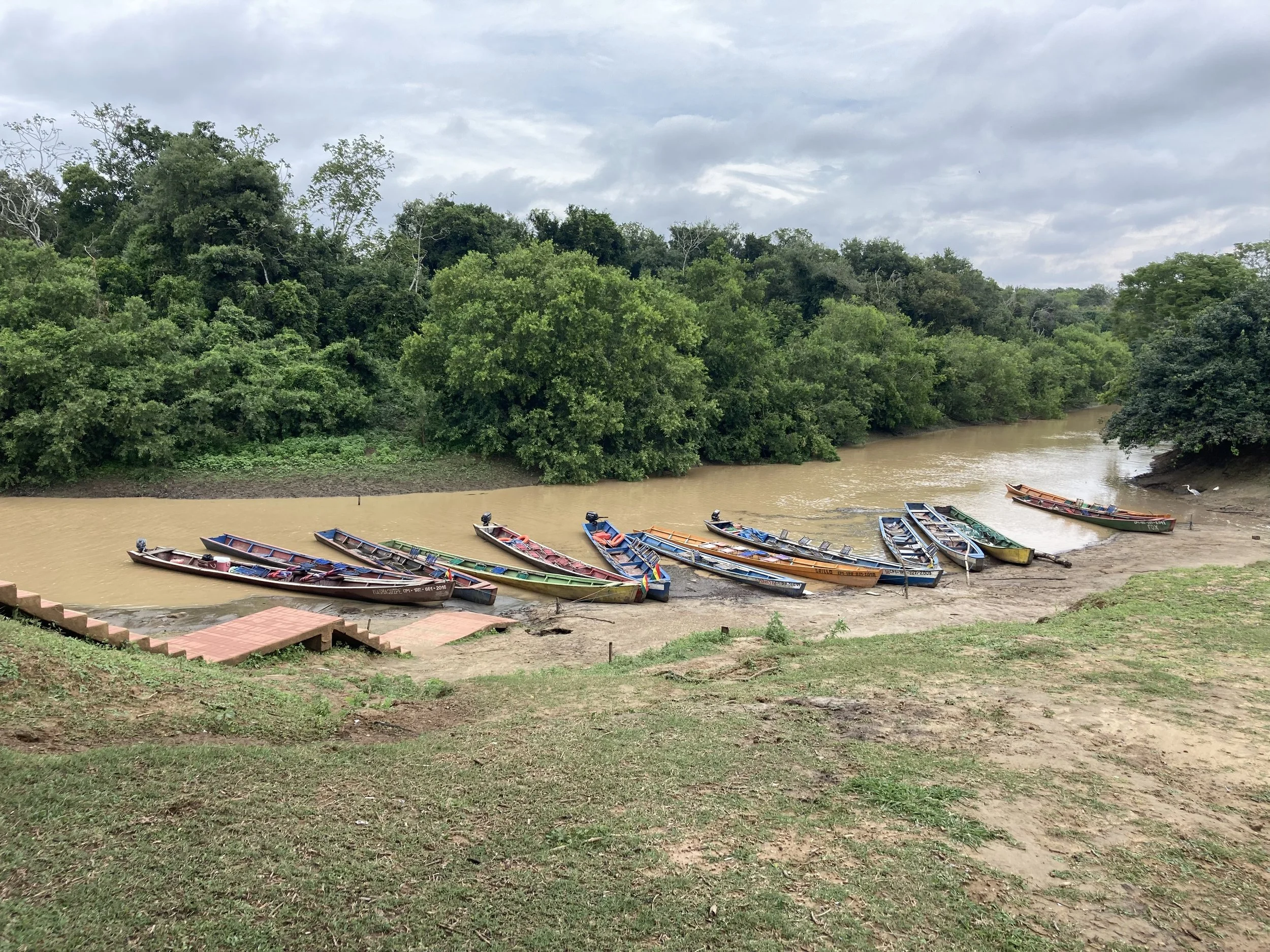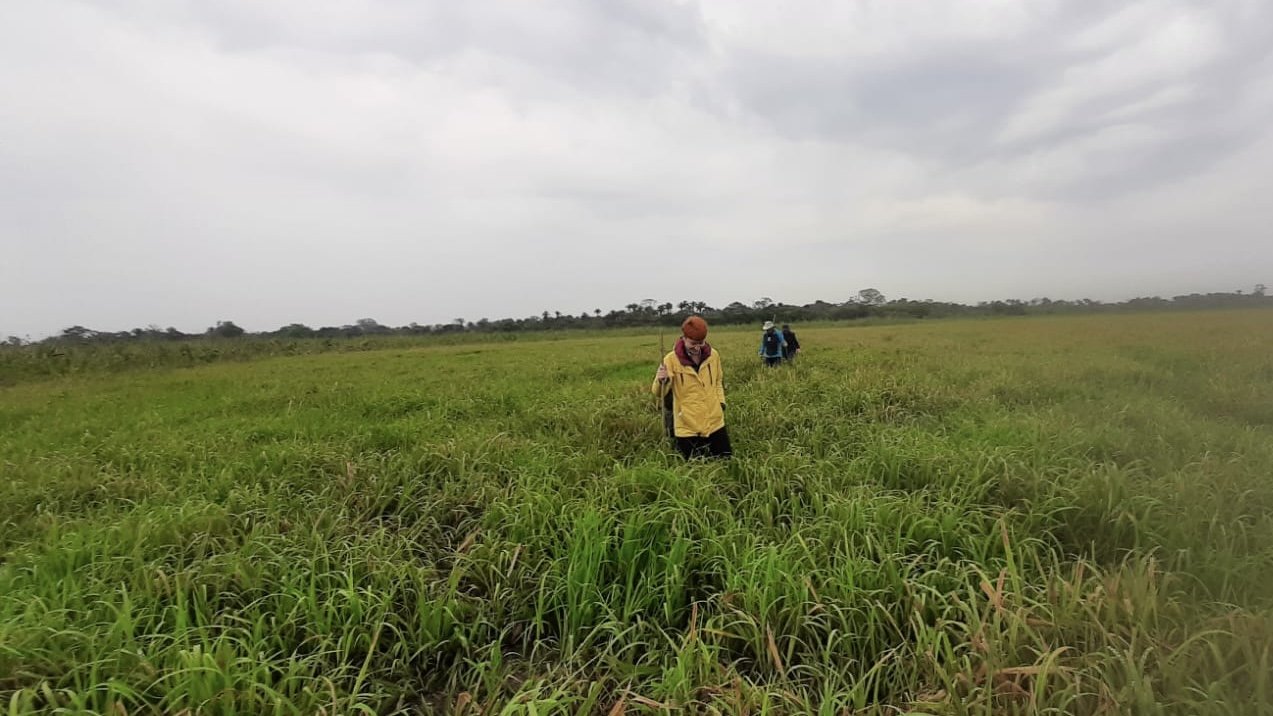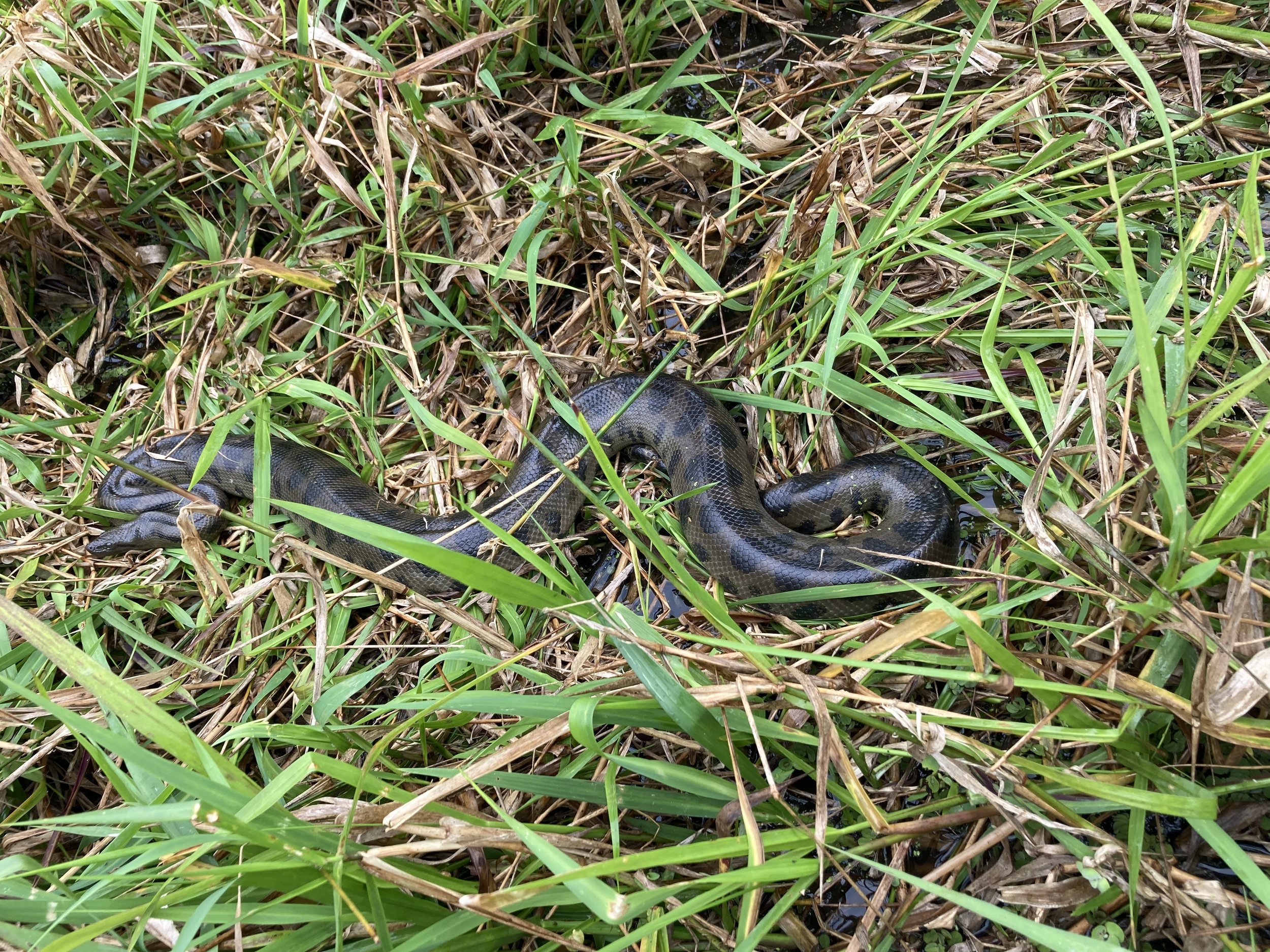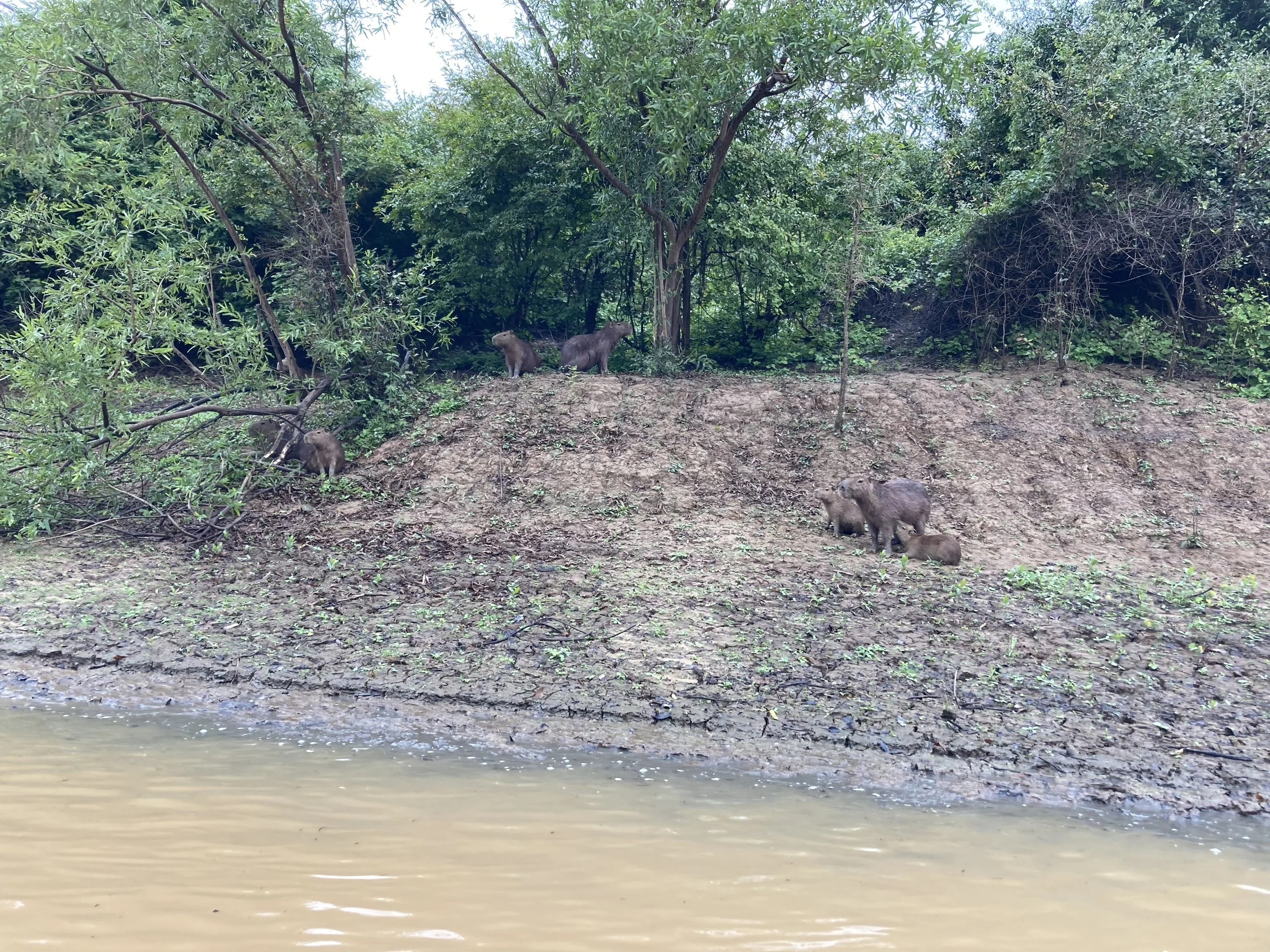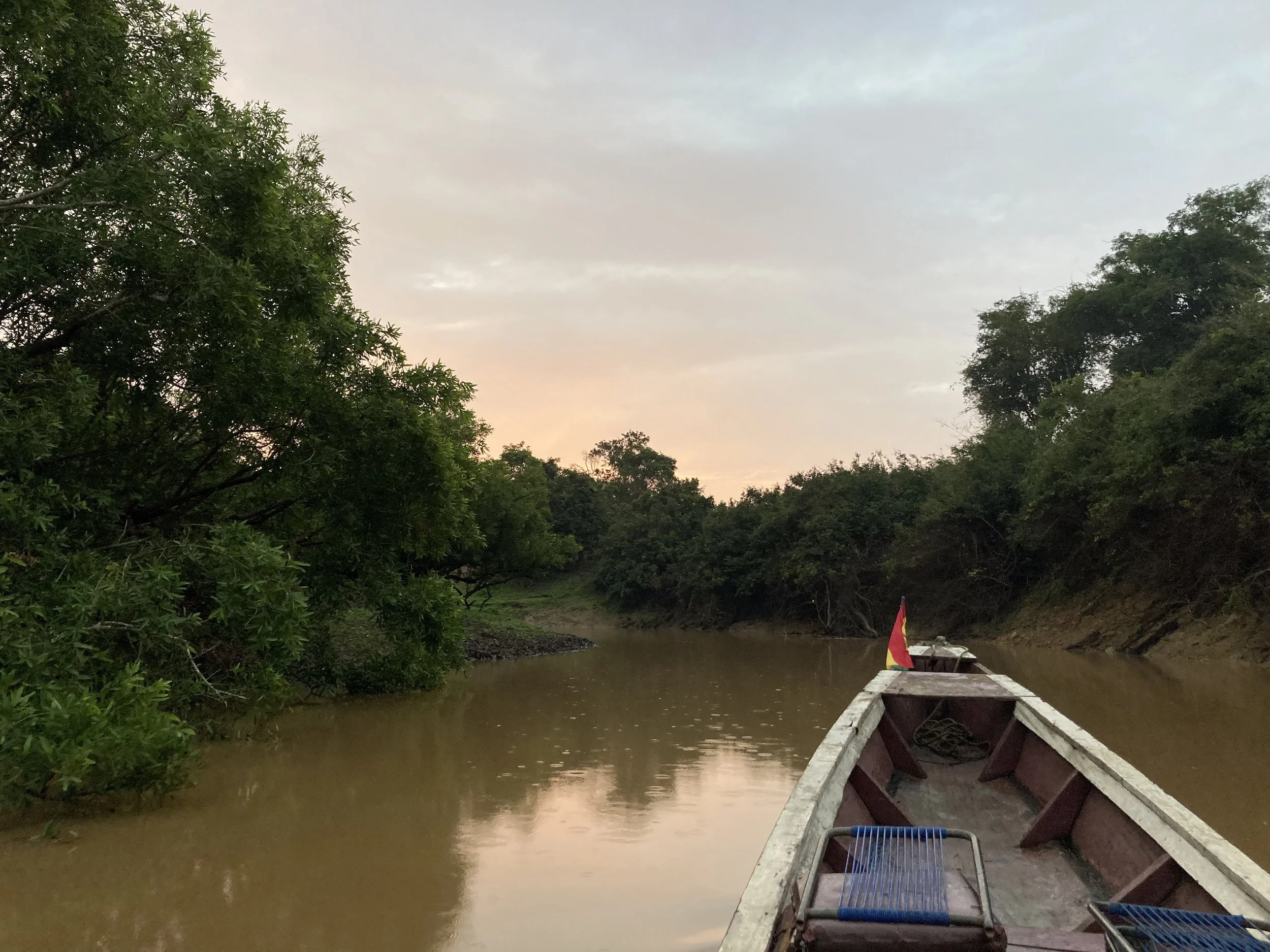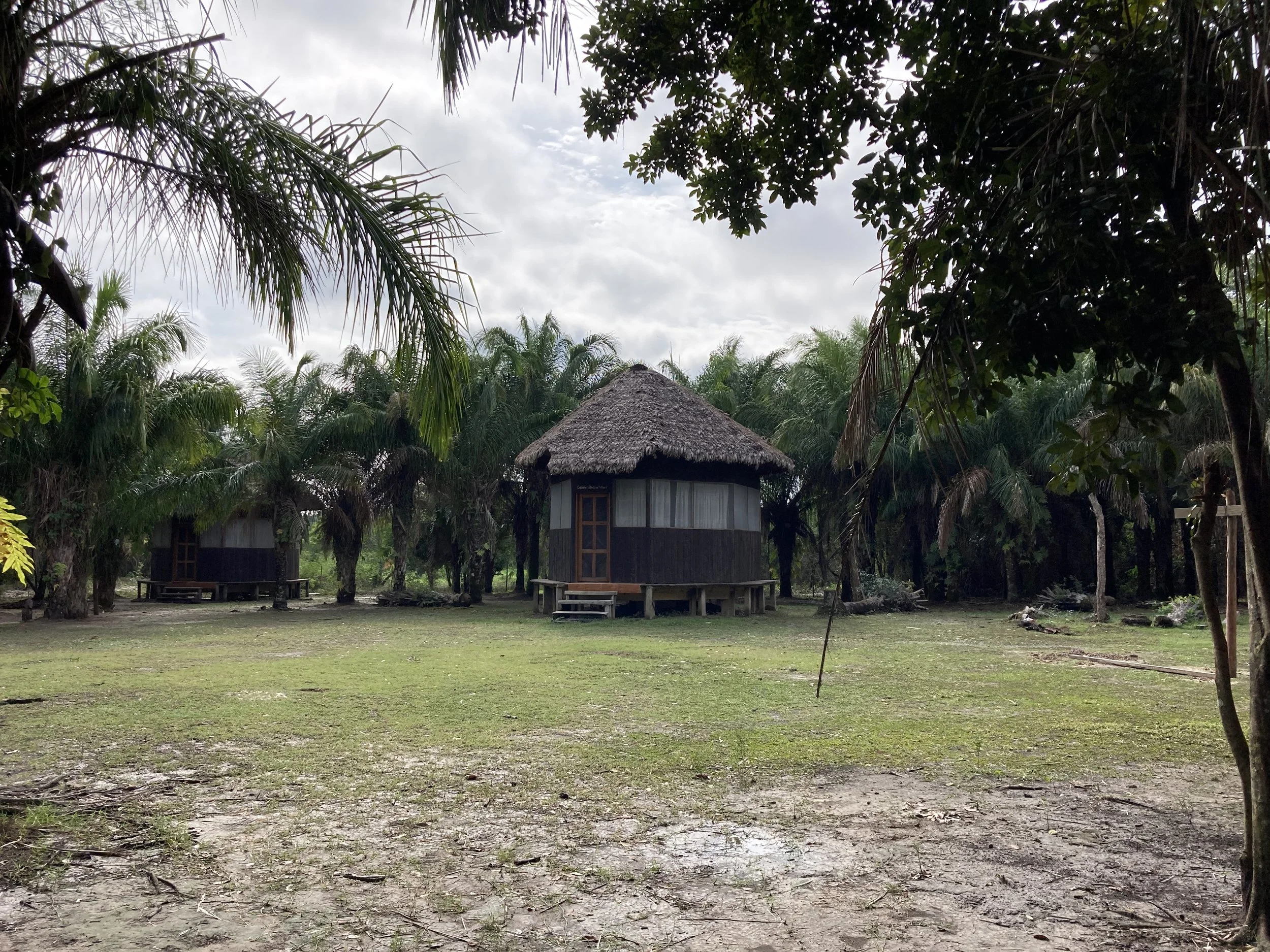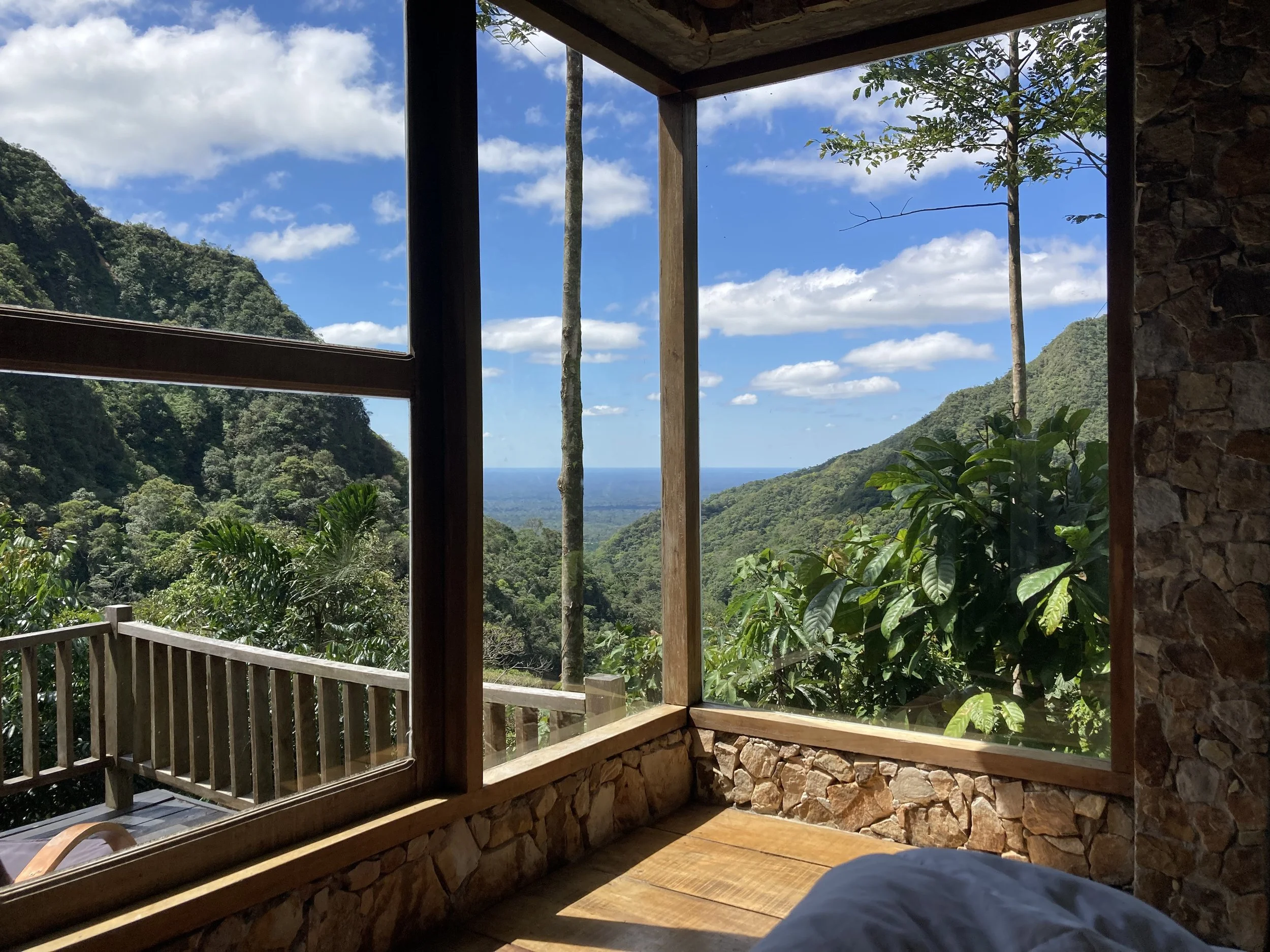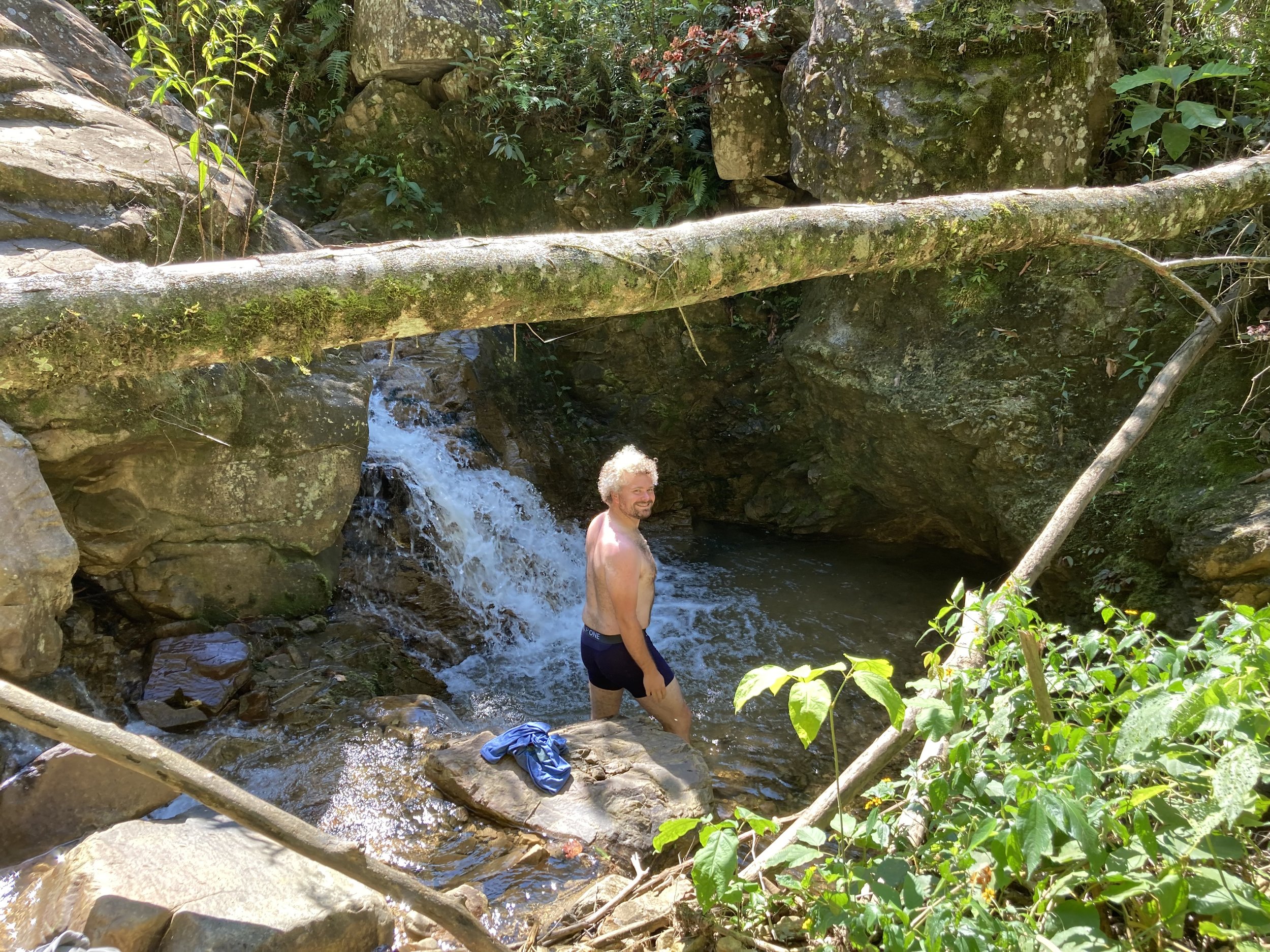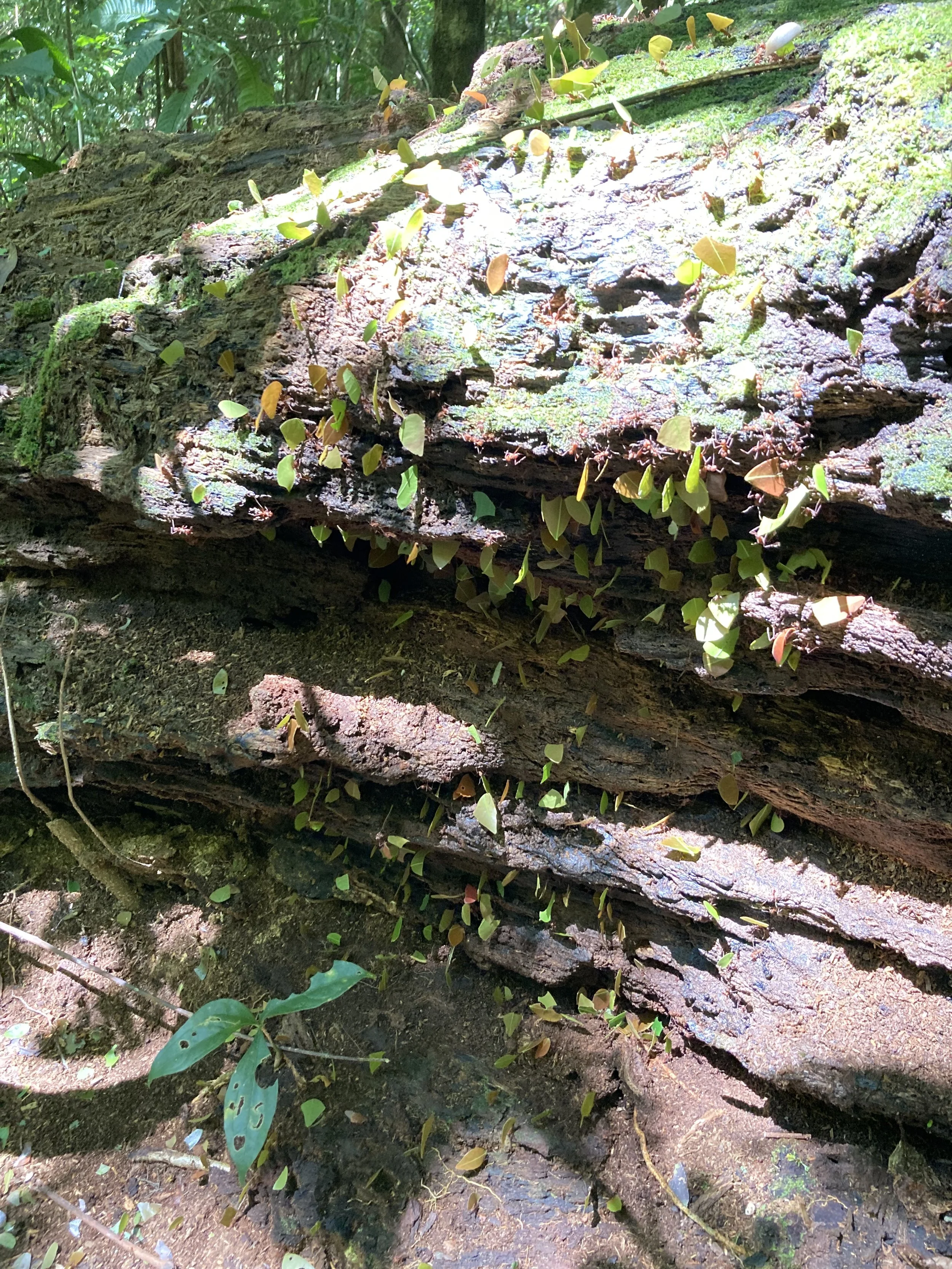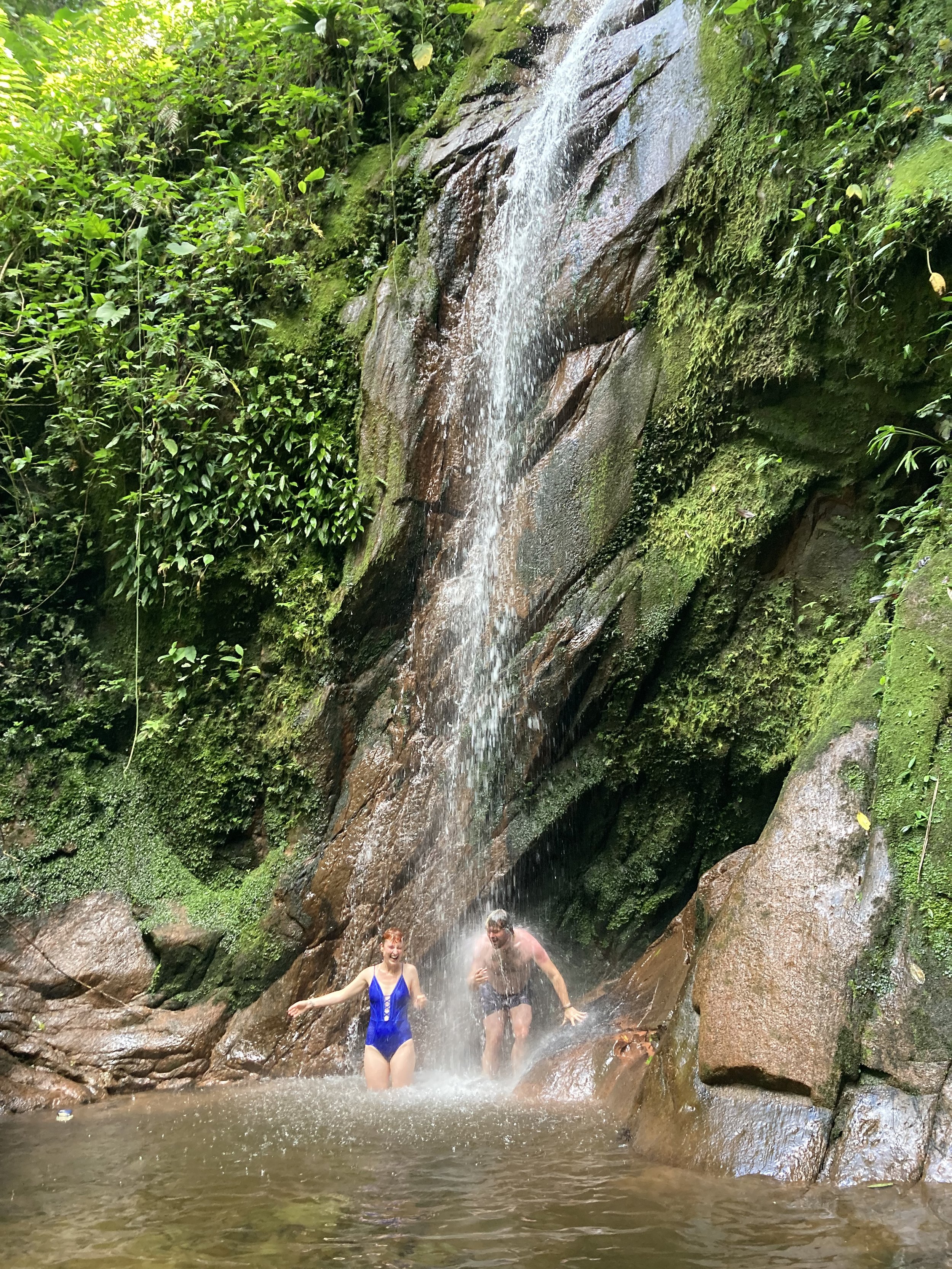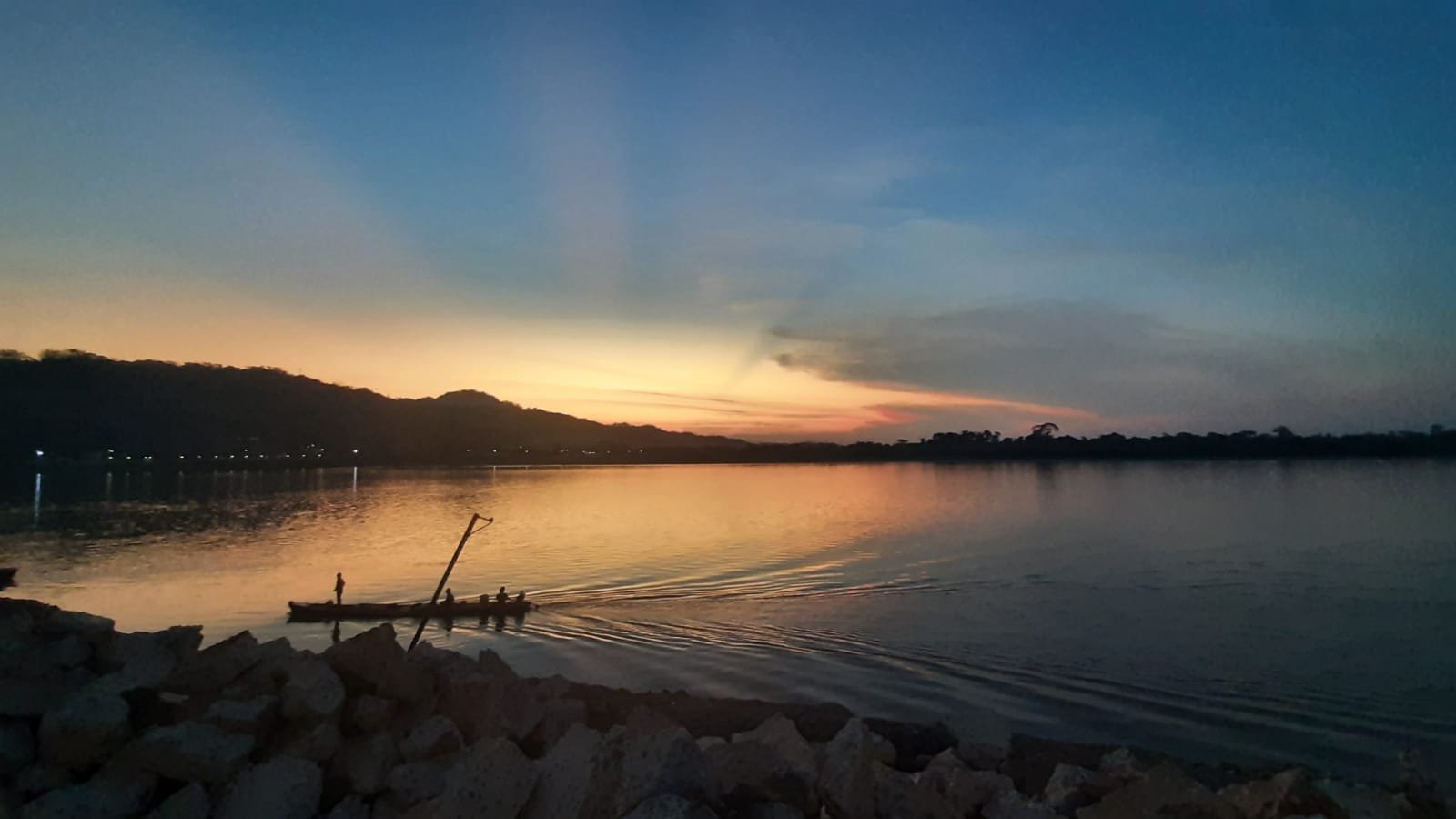The Amazon
4th to 12th August
Unforgettable. A life highlight, not just a trip one!
Our trip into the Amazon was divided into three parts: a few days in the little town of Rurrenabaque, three days and two nights on a Pampas tour, and three days and two nights in a lodge in the jungle, in the Madidi National Park.
Rurre is known as the gateway to the Amazon in Bolivia. There are just as many travellers (from many different countries) as locals, if not more, each one only staying a day or two and it gave the town a beautiful, ephemeral feeling - everything stays the same but we are all just guests stopping by on our way to somewhere else. And the dogs far outnumbered everyone. A Frenchman had emigrated and set up a French patisserie there in a little hut, with excellent coffee, and two lovely ladies ran a little restaurant on the edge of town where everything was made of wood and you had to order your meal (fish) a day in advance so they could go to the market and buy it fresh for you.
The hostel we were staying in had a pool so we took full advantage of a bit of downtime and (some) good weather and it felt like we were just on holiday. The weather was almost Caribbean tropical: immense downpours followed by blazing sunshine, one day cold and wet and windy and the next 30-plus degrees and humid.
Our Pampas tour started on our second day in Rurre. This a tour of the wetlands near the Yacuma river, which is a tributary of a tributary of the Amazon river, with the goal of seeing wildlife. The tour started with an unexpected adventure: after a few days of tropical rain, the “roads” (dirt tracks and diversions away from the tarmac roads under construction) were a literal mud bath. The tour started a 3 hour drive and 20 minute boat ride away from Rurre, so in a people carrier (of course, who needs a 4x4), our somewhat crazy but totally genius puzzle-solver driver navigated us through small lakes and mud so deep we regularly lost grip and slid all over the place - as we could see every other car around doing the same (not the double decker coach though that had got a wheel stuck two-feet deep in the mud). After the first few minutes of panic, we started to have a great time on this little rollercoaster! And we saw a sloth in the trees along the way, albeit from a bit of a distance.
The Pampas tour itself consisted of multiple boat tours on the river to see who was swimming alongside and underneath us, a walk (splash?) [Jeremy edit: a slow, deliberate wade] through a stinky foot-deep swamp in search of an anaconda (found one - alive, and half of one - dead, and two caimen hissing and blowing bubbles at us, yikes), and a hike into the jungle away from the river to see more monkeys and birds. We saw so much!!
From the boat we saw hundreds of caimen, in the water and sunbathing, most of them speckled but we saw a few of the bigger and more aggressive black ones too. We also got to see three different species of turtle, pink dolphins as they played and swam in the water next to our boat (one of them darting past so fast it looked like a missile underwater), and a huge number of capybara - and capybara babies - who are officially the CUTEST animal that has ever existed [J: my favourites]. We took a couple of nighttime boat trips too, where the caimen’s eyes glowed red in the dark as they reflected the light from our headlamps, very eerie, birds and bats flew at us and right past our faces, and in the dark so many of the trees lit up like Christmas trees glittering with the lights of thousands of fireflies.
We got really lucky with our guide, Ever, who was born and grew up in the jungle and has a really special relationship with the animals. We’d researched agencies to make sure we were choosing a sustainable one that didn’t feed the animals to attract them but we got even luckier than that - Ever was evidently a monkey whisperer and could whistle in certain ways to talk to the monkeys who would then talk back to him! So we ended up seeing lots of different types. Seeing all these animals in their natural habitats, unspoilt and merely observed rather than interfered with by humans, was magical.
The most magical thing of all for me though was nighttime. We were staying in eco-lodges right next to the river, lodges with mosquito nets rather than glass in the window frames. Which meant throughout the night you could hear so much life all around. Nocturnal birds with strange calls you’ve never heard before, the occasional sploosh as a caiman got in the water, different insects all talking to each other, the occasional fluttering of the bat in our roof… it was hypnotic. I absolutely adored just lying there and listening to everything and feeling immersed in it: a feeling I really didn’t want to leave when it was time to finish the tour.
But leave we must, because we had the second part of our Amazon trip to come: a stay in a remote lodge in the Madidi Park, the most biodiverse park the world. When we were first planning our trip and deciding what were the key things we wanted to do, I started looking up the Amazon in Bolivia and saw this picture of a cabin in the mountains, surrounded by trees and mist and I couldn’t get the picture out of my head. It was this picture that actually introduced us to Rurrenabaque and thus shaped this part of our travels… and it was this cabin that we stayed in for a couple of nights. It did not disappoint. (The part of the image below that looks like the sea, is a sea of trees all the way to the horizon.)
Around us there was nothing but trees and rivers and mountains and more butterflies than I’ve ever seen in one place (there are apparently 1,869 different species of butterfly in the Madidi!). No other people, no restaurants or cafes or WiFi or anything. It was a glorious escape. On our first afternoon there we followed the sound of water nearby, clambering down rocks and trees, to find a little river and the gorgeous natural pools it had formed, with crystal clear water and nature in all directions, including a bright blue butterfly whose wingspan was at least 4 inches. So naturally we got straight in the water and watched the world around us!
On our second day we had a guide, Jamie, who took us for a 6 hour trek through more of the Madidi (entry is controlled and you can’t get in or walk through most of it without a certified guide, for the protection of the park). We hiked through the deepest part of the jungle we’d been in and up to a viewing point, stopping along the way to learn about different types of trees and animals that live there. Including all of the ants, which I’d always known were cool but seeing 1,000s of them in action, carrying bits of leaf back to their metre-plus high nests through roadways cleared by previous ants was astounding. On a micro-scale each one knew exactly the role it had to play and was completely focussed on getting its little bit of leaf (or whole leaf for the occasional macho ant) back to the den, where - get this - they use the leaves to grow mushrooms to feed the colony!
(If you look closely below, each one of these little green leaves is actually an ant carrying a leaf, going up and over a fallen tree trunk in their path. Unfortunately I can’t put videos here but get me to show you them because they are fascinating and extremely cool!)
After this part of our hike we then adventured down to a different bit of river where there was a bigger waterfall. So of course we both got straight in again and the freezing cold water couldn’t have been more refreshing after several hours of walking in the heat [J: breathtaking, in both senses of the word. Another Papa Llama special].
The next day was already time to leave… so after sneaking in a couple of hours of reading on our secluded balcony in the sun, we got back to Rurrenabaque and then onto the night bus back to La Paz. I’m glad we still have some more adventures to come on our trip and more to look forward to because these few days have been such a highlight - as I wrote at the beginning, an unforgettable experience and one I really didn’t want to leave!
